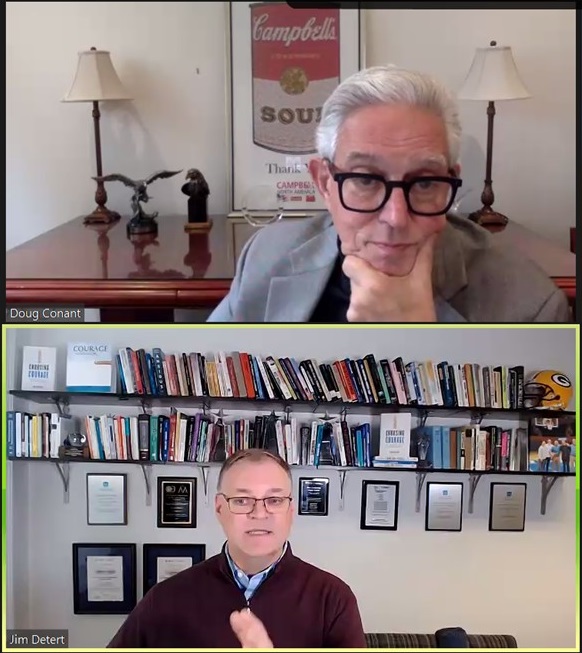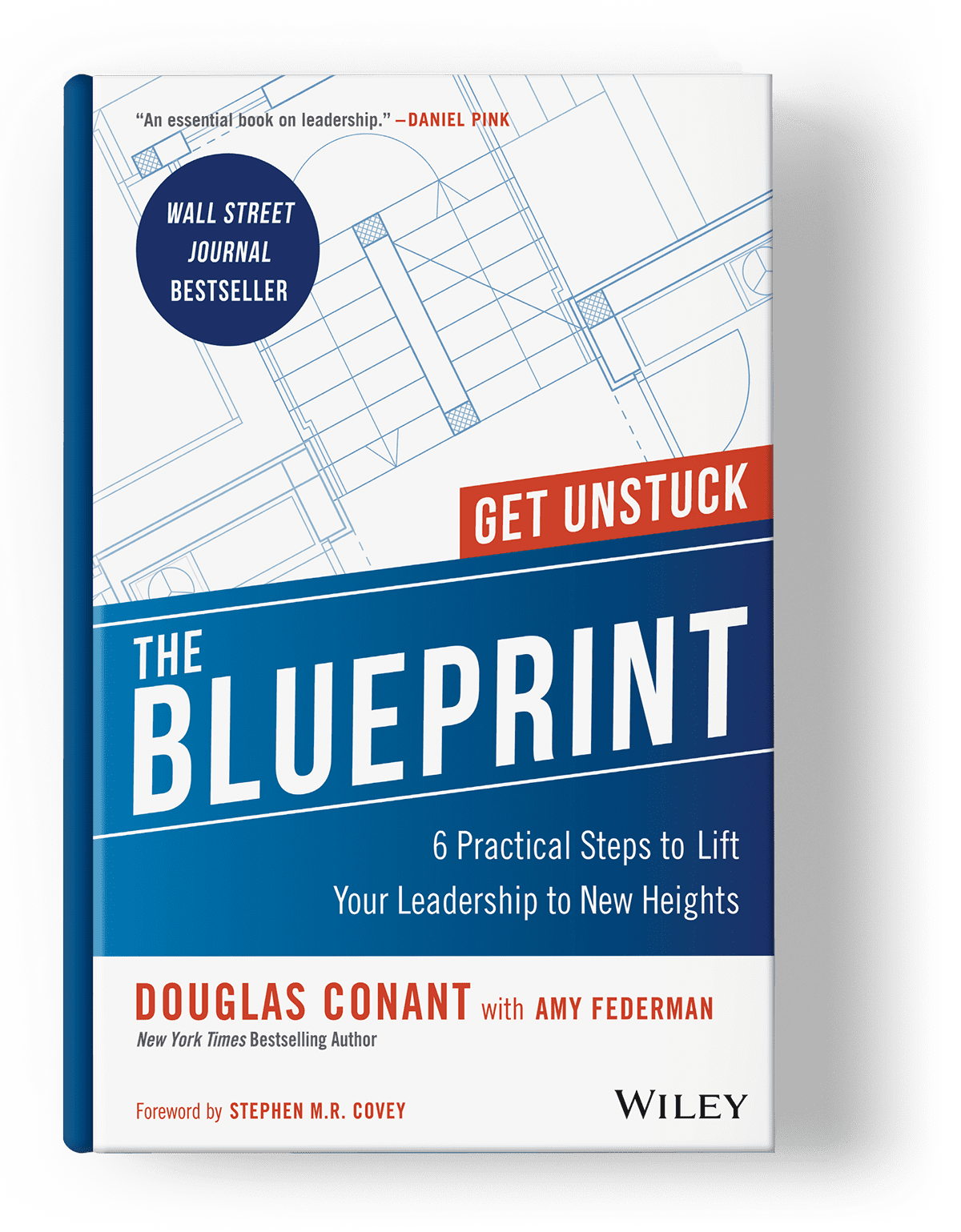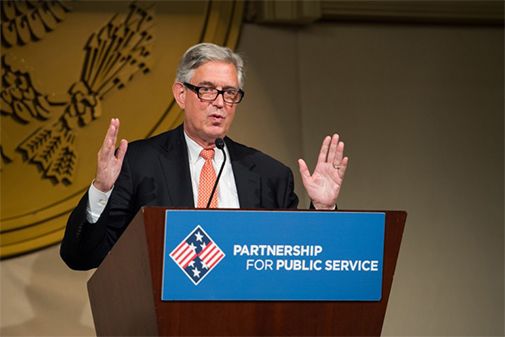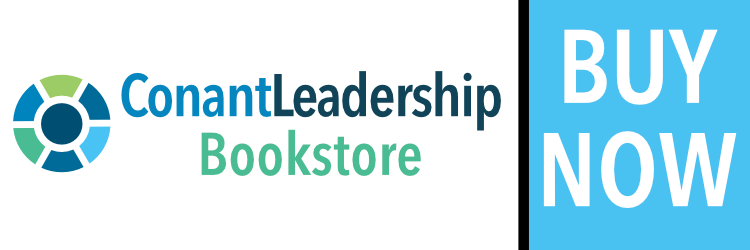‘Build a Courage Ladder’—Two Top Leadership Experts on How to Be Competently Courageous
At ConantLeadership’s recent biannual BLUEPRINT Leadership Summit—a virtual meeting of top leadership luminaries—Jim Detert (John L. Colley Professor of Business Administration at the University of Virginia Darden School of Business and author of Choosing Courage: The Everyday Guide to Being Brave at Work) spoke with Doug Conant (Founder of ConantLeadership, former CEO of Campbell Soup Company, and author of The Blueprint) about how to build the skills of competent courage.
 Enjoy the following tips and takeaways from their conversation in this recap. You can also watch the full video of their discussion (skip to roughly minute 5 to skip intros and housekeeping).
Enjoy the following tips and takeaways from their conversation in this recap. You can also watch the full video of their discussion (skip to roughly minute 5 to skip intros and housekeeping).
Courage Is a Choice
It was Jim Detert’s book, Choosing Courage, that inspired Doug Conant to spotlight courageous leadership as the theme of last fall’s BLUEPRINT Leadership Summit. Conant says that courage, as “arguably the most critical conundrum in the workplace today,” is difficult, yet wholly necessary, to uphold.
Conant frames the need for courage in the context of today’s complicated business landscape. He shares that the modern workplace has moved from a VUCA environment (Volatile, Uncertain, Complex, Ambiguous) to a BANI (Brittle, Anxious, Nonlinear, Incomprehensible) state and is more chaotic than ever. It’s tough out there. Which is why he sees Detert’s view of “courage as a choice” as so powerful; agency empowers leaders to navigate the rocky terrain they encounter at every stage of their career.
This idea of choice—the thoughtful selection of your actions and carving of your own path—is what prompted Detert to make courage the polestar of his book. After years of teaching in the broad area of leadership, he noticed a resounding sigh of resignation among people in their late 30s and into their 40s: “I had this sense that people were a third into their career already wondering, ‘Is this all there is? . . . Am I stuck?’”
Detert says this quote from Henry David Thoreau rings true: “The mass of men lead lives of quiet desperation.” And the magnitude of the collective, halfhearted acquiescence that he observed convinced him to look into courage as a potential beacon of hope.
Ultimately, Detert landed on the idea that courage begins with “a deeper sense of agency,” that asks, “what do I want my life to stand for, what is it currently standing for, and do I have to accept the status quo?” In this context, the malaise and resignation he’d observed made more sense. People crave meaning and impact, and without courageous action, they can end up lamenting the road not taken. In his research, Detert found that leaders must do two things in order to develop competent courage:
- Rethink what it means to be courageous
- View courageous action as a skill to develop
Look Beyond the Superhero Myth
Detert says rethinking courage requires challenging preconceived notions and letting go of the “comic book, superhero myths.” An entire world of bravery exists beyond running into burning buildings or fighting on the front lines. For most leaders, it’s the everyday challenges—speaking up in meetings, making tough calls—that prove to be greater feats.
To help leaders feel empowered to face their fears, Detert also debunks another myth: The belief that courage is only for people who are bold or unafraid. In fact, he says, there’s no magic personality type that’s predisposed to be courageous. Courage is a conscious decision available to everyone: It’s “about being willing to move forward, even though you’re afraid.” Detert is swift to point out that bravery doesn’t require dramatic acts of martyrdom either. Most acts of courage are “just about doing the right and sometimes hard thing” in small moments.
Conant, too, is no stranger to courageous leadership. During his 45-plus-year career, he’s learned that “courage is the mother skill” that precipitates all other virtues of success. Many of his leadership wins—from making the tough decision to leave a senior role at Kraft to pushing back during a pivotal interview at Nabisco—are marked by a pattern of doing the next right thing, no matter how difficult. In his book, The Blueprint: 6 Practical Steps to Lift Your Leadership to New Heights, Conant writes: “We may not be warriors facing battle, but we must summon courage every day in our lives and our work if we hope to become exceptional in anything we care about.”
“We’re hardwired to care deeply about being accepted by those around us.”
Courage Takes Time
Both panelists say that leaders must view the ability to take courageous action as a skill to develop, the way you would any other competency—like playing an instrument or learning a language. Detert stresses that courage is not inborn: “We don’t say that some of us are born to be kind, or some of us are born to be fair, or some of us are born to be trustworthy. We say it’s the responsibility of all of us. The same should be true of courageous action.” Through this lens, courage feels attainable as a shared value, a torch we can all carry to light our collective path.
Conant and Detert both say that this path starts with looking inward. They urge leaders to recognize whether their tendency is to flee, freeze, or fight in the face of stress or conflict. Self-awareness is critical. For example, if your inclination is to flee or freeze, you may tend toward what Detert calls “ruinous empathy,” which has convinced you that you’re “too nice to hurt the other person’s feelings.” In this case, practicing courage might start with consciously working against your reflexes, making different choices, and being more direct, despite the discomfort.
Detert’s own inclination is towards the “fight” response, which means he doesn’t struggle to speak up on the fly, but he does sometimes react too quickly and miss important context, which can damage his effectiveness..
To illustrate the power of being patient and curious, Detert tells the story of Catherine Gill, Executive VP of Root Capital (a nonprofit supporting agricultural enterprises). When she joined the company, she saw a major disparity: The organization lacked women leaders despite the fact that at least half of the world’s farmers are women.
Rather than rushing to an immediate outcry, Gill spent two years studying the issue, working toward the organization’s socially conscious mission, and getting to know the people around her. This meant she sometimes had to go against her instinct to fight one-off problems so as not to miss the forest for the trees. Because she wasn’t constantly rallying against pet issues, she earned credibility and was ultimately able to transform the organization. Detert explains that Gill expressed her courage by building a reputation as “a diplomat, not a revolutionary,” because “if you try to stand for everything, you sort of end up standing for nothing.”
Conant says Gill is a great example of the need for leaders to build “an emotional bank account with their audience,” a reference from Stephen Covey’s book, The 7 Habits of Highly Effective People. Eventually, every leader needs to make tough decisions, or “withdrawals,” from that emotional bank account. The key is to model courage and build trust beforehand. “Build a relationship that can weather the challenge of the moment,” Conant says. Gill laid the groundwork so that when the time was right, people were listening, and she was able to enact meaningful change.
“Self-awareness is critical.”
Practice Courage in the Right Conditions
Gill’s story is one of competent courage, and Conant asks his co-panelist how he helps people work toward this level of competence. Detert answers with a reference to the late Colonel Eric Kail, whose words are a profound reality check for leaders: “Hoping or thinking that we will be courageous when a critical moment arrives is a cowardly approach. We cannot become someone in 30 seconds that we haven’t been for the past 10 years.” The essence of competent courage lies in the everyday habits you develop: “You have to do the work ahead of time for your actions to have the intended impact,” says Detert.
Conant reiterates that an integral part of being proactive requires the pursuit of self-knowledge—getting anchored in who you are—which is itself an act of courage. Otherwise, he cautions, “the uncertainty is going to be a heavy, heavy weight on you,” which can stifle your ability to act in alignment with your values. He says to focus on what the best version of yourself might look like. Ask yourself questions like, “What do I stand for?,” and “How do I want to show up in the world?” This inner reflection helps you put down the roots that will enable you to be courageous when it matters most.
Detert builds on the idea of preparation: He advocates practicing courage in environments that “mirror the conditions of stress.” For his research, he and his team built an experiential lab to monitor and measure physiological stress responses in business simulations. The goal is to mentally tax participants so they learn to practice in conditions that mirror real-world chaos. Detert also recommends that leaders “model the things that you know are hard,” as part of your method. For example, don’t say you want other people to speak up in meetings, but then stay quiet yourself in group scenarios. Likewise, “telling people it’s okay to have emotions is not gonna work if they’ve never seen you be anything but robotic,” he adds.
Both panelists emphasize that courage requires risk. People can often recognize what might be the correct or noble course of action in a given situation, but choose not to act on it for fear of being fired or ostracized. “We’re hardwired to care deeply about being accepted by those around us,” Detert explains. In a BANI environment, even small acts of courage may come with some degree of economic, social, and/or psychological risk. Conant says the onus is then on leaders to cultivate a psychologically safe company culture. He urges management to “create environments where those kinds of risks are minimized [and] create the conditions to make it easier for the people that are working for and with us to lean into this notion of being courageous.”
Build a Courage Ladder
Detert builds on the importance of culture building. He cautions leaders to resist the urge to overemphasize courage if they haven’t yet created the correct conditions for the virtue to flourish: “If you’re a senior leader, I actually think it’s a terrible idea to walk around encouraging courage.” Instead, he says leaders should start by doing “the things that would make it less necessary for others to be courageous.” These types of behaviors—e.g., building psychological safety or overhauling dated norms—are the true badges of courageous leadership. Detert points to the Workplace Courage Acts Index (WCAI) as an assessment to help individuals and organizations get started on creating ideal workplace conditions.
In closing, Detert encourages people to “build a courage ladder,” and start at the bottom with small acts of courage that don’t feel too risky. “What my experience has taught me,” he says, “is that you’re not just magically ready because you hope you’ll be. You have to get ready.” As with most things in life, both panelists laud the wisdom of starting small: Open up to someone you already trust, volunteer for an opportunity that gently pushes you, look inward to get anchored in your values. Start with your feet firmly planted on the ground of the here-and-now and then climb the ladder towards competent courage, slow and steady.
__
Enjoyed these insights?
Watch the full recording of this interview to get even more details plus insights from an audience Q&A. You can also access the complete inventory of previous BLUEPRINT Leadership Summit sessions, including illuminating conversations with Brené Brown, Susan Cain, Indra Nooyi, Amy Edmondson, Bill George, Barbara Humpton, and many more. And be sure to register for our upcoming BLUEPRINT Leadership Summit to hear from top leadership thinkers in conversation with Doug Conant.
 About the author: Vanessa Bradford is a freelance content writer and copywriter, and C3PR’s Content Marketing Director.
About the author: Vanessa Bradford is a freelance content writer and copywriter, and C3PR’s Content Marketing Director.
(Cover photo by Photo by Denys Nevozhai on Unsplash)

“Doug Conant is remarkable—and so is this work.“
– Stephen M. R. Covey
Author of The Speed of Trust

The Blueprint
6 Practical Steps to Lift Your Leadership to New Heights
By Douglas Conant with Amy Federman

Have Doug Speak at Your Event
Doug works collaboratively with event organizers to customize his material for each audience.



0 Comments